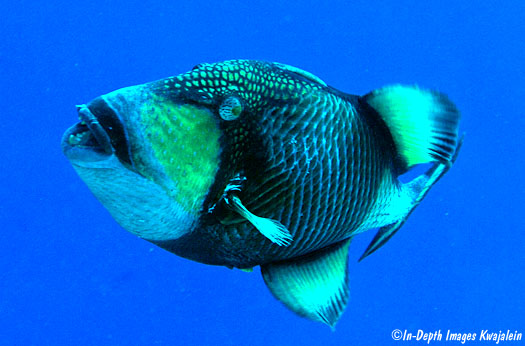
Balistoides viridescens lives in a variety of lagoon and seaward reef habitats. This is one of the larger triggers with big teeth and very strong jaws. We frequently see them breaking off branches of coral, one branch at a time, digging their way down to the crabs and shrimp hiding within the coral colony. They can also be seen digging in the sand and rubble, and turning surprisingly large rocks by grasping an edge in their teeth and backing up. They will eat just about anything they can dig up. I have watched large individuals biting the spines off large sea urchins like Echinothrix calamaris until they can finally get to the test, which they break to feast on the urchin's innards. Sometimes some of the urchins spines embed themselves in the trigger's lips. You'd think that would hurt, but doesn't seem to deter them. I also watched one eat a fairly large sea slug, Dolabella auricularia, by biting off chunks while the slug spewed its purple ink. This species forms a nest in a small depression in sand and rubble where it puts its eggs, and the fish hovers over the nest protecting the eggs until they hatch. The eggs need the protection; if the parent trigger is chased away, many small wrasses, damsels and other fish voraciously feed on the eggs. But the trigger is usually pretty tenacious. They will defend the nest aggressively, even to the point of attacking divers who approach too close. Several divers have been charged, bumped or even bitten by triggers defending nests. In one case, a diver was bitten in the face. It is wise to give nesting triggers plenty of space.

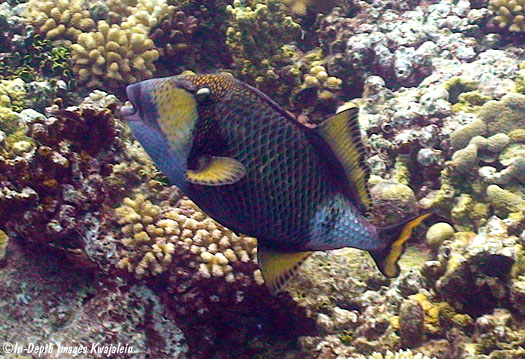
Looking for food in a lagoon algae patch.
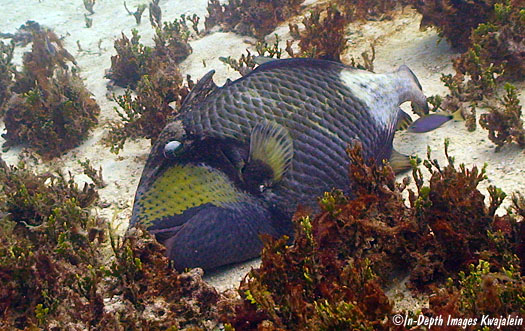
A small juvenile.
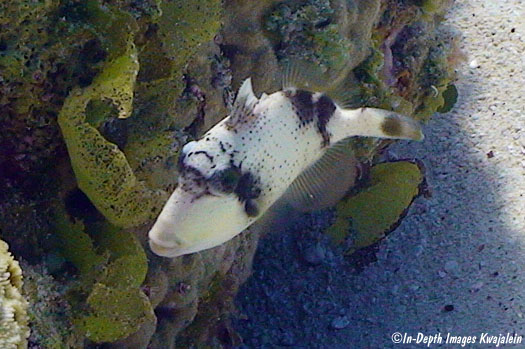
This one was photographed at Pohnpei, Caroline Islands, in shallow water where it was defending a nest.
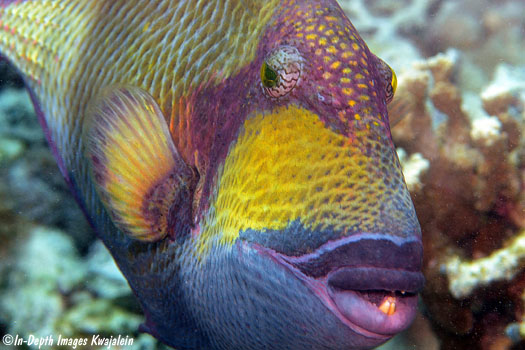
Over a nest with pinkish eggs.
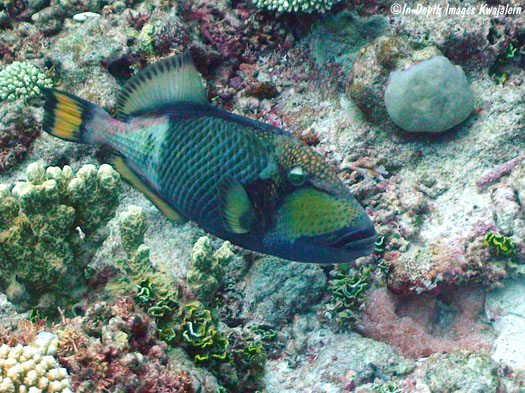
Another nesting one blowing on its eggs.
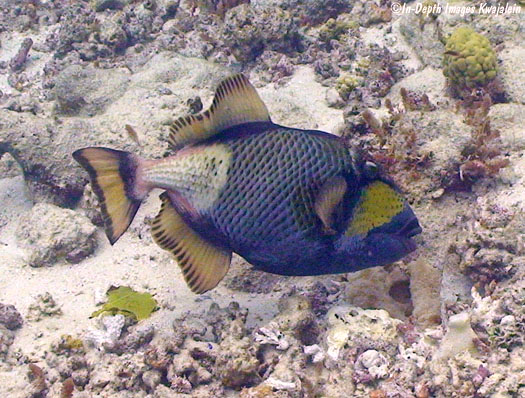
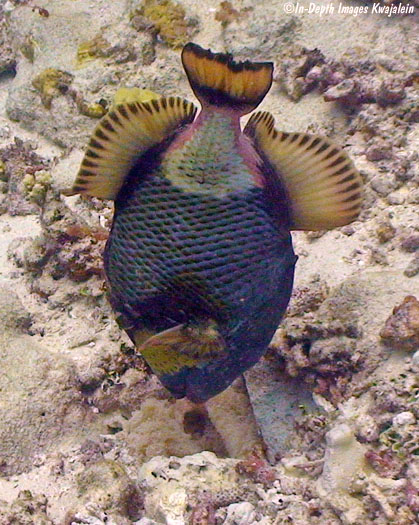
Created 21 May 2012
Updated 13 April 2014